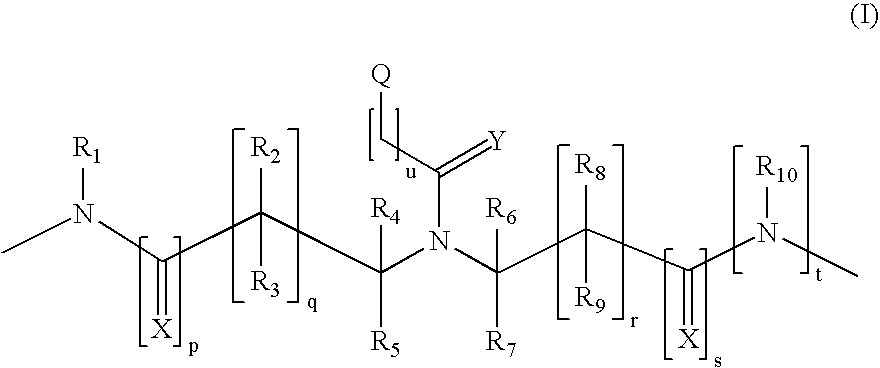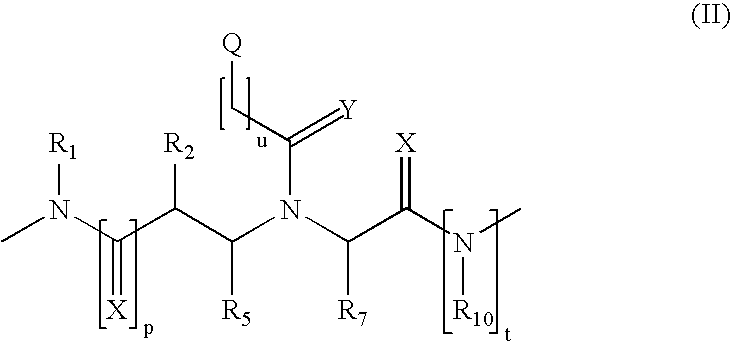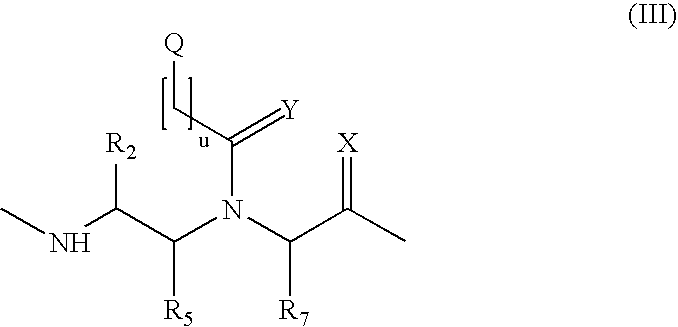Method and probes for the detection of chromosome aberrations
a technology of chromosome aberration and probes, applied in the field of methods and probes for the can solve the problems of inability to find, fast, convenient, cheap and user-friendly tests, and allow for widespread and routine detection of chromosome aberrations
- Summary
- Abstract
- Description
- Claims
- Application Information
AI Technical Summary
Benefits of technology
Problems solved by technology
Method used
Image
Examples
embodiment 1
Illustrative Embodiment 1
[0154]The method of the invention can suitably be used for detecting chromosome aberrations in ALL and NHL. The sets of hybridisation probes are chosen so as to flank each site of the potential breakpoint. Interesting regions are indicated below in Tables 1 and 2. Apart from the two sets flanking the potential breakpoint, at least one set of probes targeting fusion partner genes may be included
[0155]
TABLE 1Chromosome aberrations in ALL.Chromosome aberrationType of ALLTypeInvolved genesPrecursor-B-ALLt(1;19) (q23;p13)E2A-PBX1t(4;11) (q21;q23)MLL-AF4t(9;22) (q34;q11)BCR-ABLt(12;21) (p13;q22)TEL-AML1T-ALLTAL1 deletionSIL-TAL1t(1;14) (q34;q11)TAL1-TCRDt(10;14) (q24;q11)HOX11-TCRDt(11;14) (p13;q11)RHOM2-TCRD
[0156]
TABLE 2Chromosome aberrations in NHL.Chromosome aberrationType of NHLTypeInvolved genesFollicular NHLt(14;18)IGH-BCL23q37BCL6Diffuse large cellt(14;18)IGH-BCL2centroblastic NHL3q27BCL6Large cellt(2;5)NPM-ALKanaplastic NHLMantle cell NHLt(11;15)BCL1-IGHIm...
embodiment 2
Illustrative Embodiment 2
Determination of Translocation Involving the Major Breakpoint (mbr) in the MLL Gene (ALL-1) and HRX
[0157]The nucleobase sequences of the peptide nucleic acid probes are selected from EMBL+GenBank, Accession numbers HSALL1X28 (exon 28) and HSALL1X4 (exon 4). The nucleobases are chosen so as to form two sets of probes, a set flanking each site of the inbr region, e.g. from exon 4 and exon 28. Each set of hybridisation probes consists suitably of from 1 to 500, from 1 to 250, from 1 to 100, or from 1 to 35 peptide nucleic acid probes.
[0158]The nucleobase sequence of the probes indicated below are selected from the lower strand (i.e. they hybridise to the upper strand). The position of the nucleobases relative to the whole target sequence are indicated as “position”. The first number corresponds to the position of the 5′ end of the probe in the sequence, and the last number corresponds to the position of the 3′ end of the probe.
[0159]Two suitable sets of probes ...
example 1
Sequence of Peptide Nucleic Acid Probes
[0179]One set of probes targeting HER-2 was selected (Accession number emb|X03363|HSERB2R Human c-erb-B-2 mRNA). The probes were selected and numbered as described in Illustrative embodiment 2. The nucleobase sequences of the peptide nucleic acid probes were as follows:
[0180]
PositionCAAGAGGGCGAGGAGGAG222–205Seq ID No 43GGTAGAGGTGGCGGAGCAT325–307Seq ID No 44TGGGCAGGTAGGTGAGTTC373–355Seq ID No 45GTGGGCAGGTAGGTGAGTT374–356Seq ID No 46GGCCAGGGCATAGTTGTC519–502Seq ID No 47GTATTGTTCAGCGGGTCTC551–533Seq ID No 48GCAGAGCTGGGGGTTCC660–644Seq ID No 49GAGCCAGCTGGTTGTTCT715–698Seq ID No 50GCGGTTGGTGTCTATCAGT738–720Seq ID No 51AGGCCAGGCAGTCAGAGTG937–919Seq ID No 52CCACGTCCGTAGAAAGGTA1099–1081Seq ID No 53GCAGGGGGCAGACGAG1126–1111Seq ID No 54GGGCTTGCTGCACTTCTCA1185–1167Seq ID No 55GCAGCCAGCAAACTCC1275–1260Seq ID No 56GAGCGGGGCAGTGTTGG1350–1334Seq ID No 57GAGTAGGCGCCATTGTGC1499–1482Seq ID No 58CTTGCAGGGTCAGCGAGTA1513–1495Seq ID No 59GGTGTTATGGTGGATGAGG1590–1572...
PUM
| Property | Measurement | Unit |
|---|---|---|
| temperature | aaaaa | aaaaa |
| temperature | aaaaa | aaaaa |
| v/v | aaaaa | aaaaa |
Abstract
Description
Claims
Application Information
 Login to View More
Login to View More - R&D
- Intellectual Property
- Life Sciences
- Materials
- Tech Scout
- Unparalleled Data Quality
- Higher Quality Content
- 60% Fewer Hallucinations
Browse by: Latest US Patents, China's latest patents, Technical Efficacy Thesaurus, Application Domain, Technology Topic, Popular Technical Reports.
© 2025 PatSnap. All rights reserved.Legal|Privacy policy|Modern Slavery Act Transparency Statement|Sitemap|About US| Contact US: help@patsnap.com



